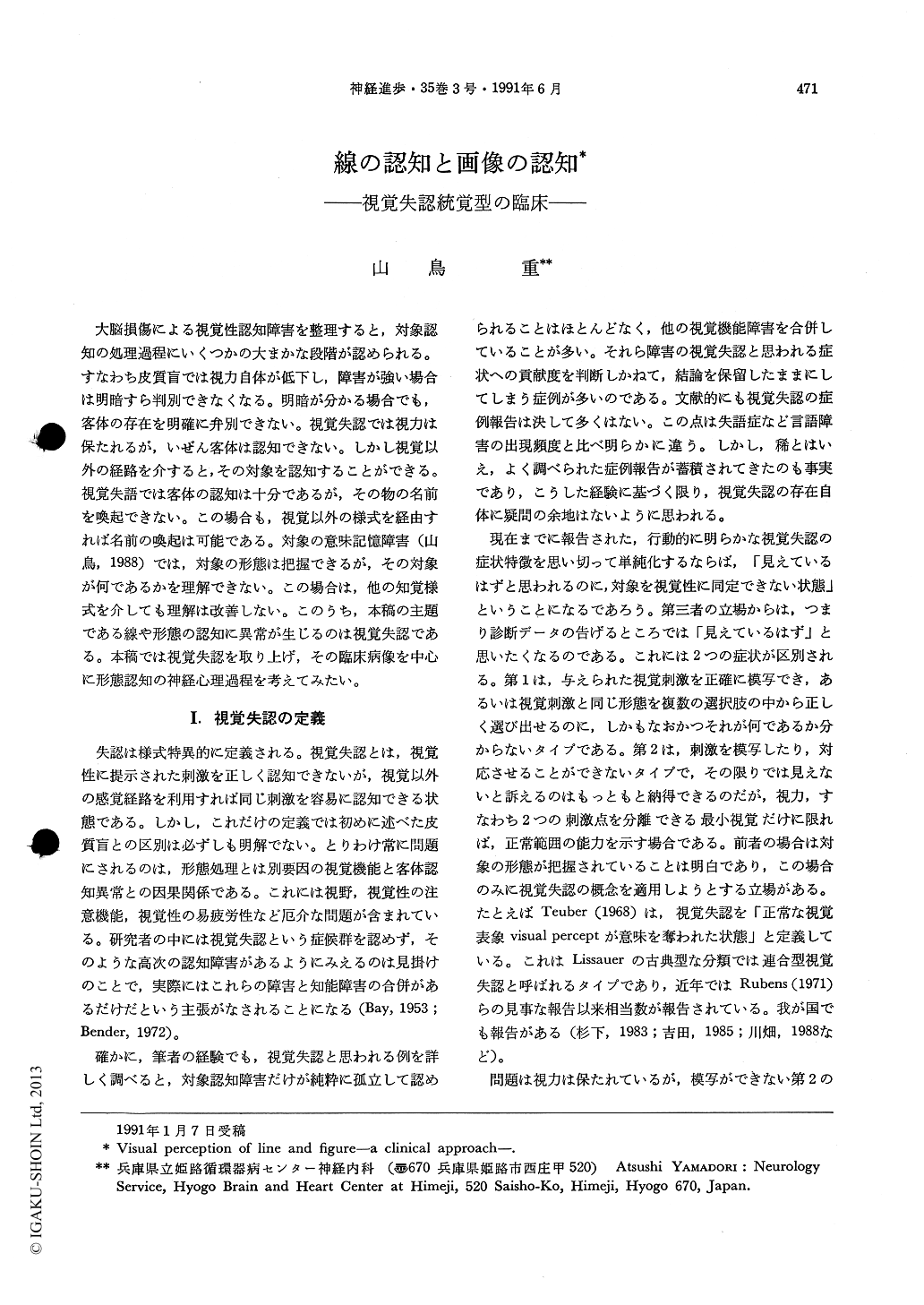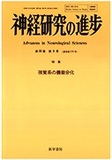Japanese
English
- 有料閲覧
- Abstract 文献概要
- 1ページ目 Look Inside
大脳損傷による視覚性認知障害を整理すると,対象認知の処理過程にいくつかの大まかな段階が認められる。すなわち皮質盲では視力自体が低下し,障害が強い場合は明暗すら判別できなくなる。明暗が分かる場合でも,客体の存在を明確に弁別できない。視覚失認では視力は保たれるが,いぜん客体は認知できない。しかし視覚以外の経路を介すると,その対象を認知することができる。視覚失語では客体の認知は十分であるが,その物の名前を喚起できない。この場合も,視覚以外の様式を経由すれば名前の喚起は可能である。対象の意味記憶障害(山鳥,1988)では,対象の形態は把握できるが,その対象が何であるかを理解できない。この場合は,他の知覚様式を介しても理解は改善しない。このうち,本稿の主題である線や形態の認知に異常が生じるのは視覚失認である。本稿では視覚失認を取り上げ,その臨床病像を中心に形態認知の神経心理過程を考えてみたい。
Disturbances of object identification limited to visual modality can be observed in several well defined neuropsychological syndromes. In cortical blindness visual impariment is such that a patient could not recognize any objects around him appropriately. In visual agnosia a typical patient seems to retain the visual capacity to a certain degree, yet he cannot identify visually presented stimulus. In optic aphasia the shape as well as the concept of a visual stimulus is quite clear to a patient but its name cannot be recalled visually. In object meaning amnesia (semantic amnesia) the shape of a presented object can be perceived correctly but no identification is possible even with the help of non-visual route.
Visual agnosia has been further divided into 2 subtypes. In apperceptive visual agnosia a patient usually preserves normal visual acuity, yet demonstrates an extreme difficulty in identifying real objects or figurative patterns. He cannot copy a stimulus figure correctly or in severe case cannot choose an identical shape from multiple stimuli. In associative visual agnosia visual perception of a stimulus is well preserved yet its meaning is lost. Thus difficulties at the level of shape perception manifest itself as apperceptive visual agnosia in clinical setting.

Copyright © 1991, Igaku-Shoin Ltd. All rights reserved.


